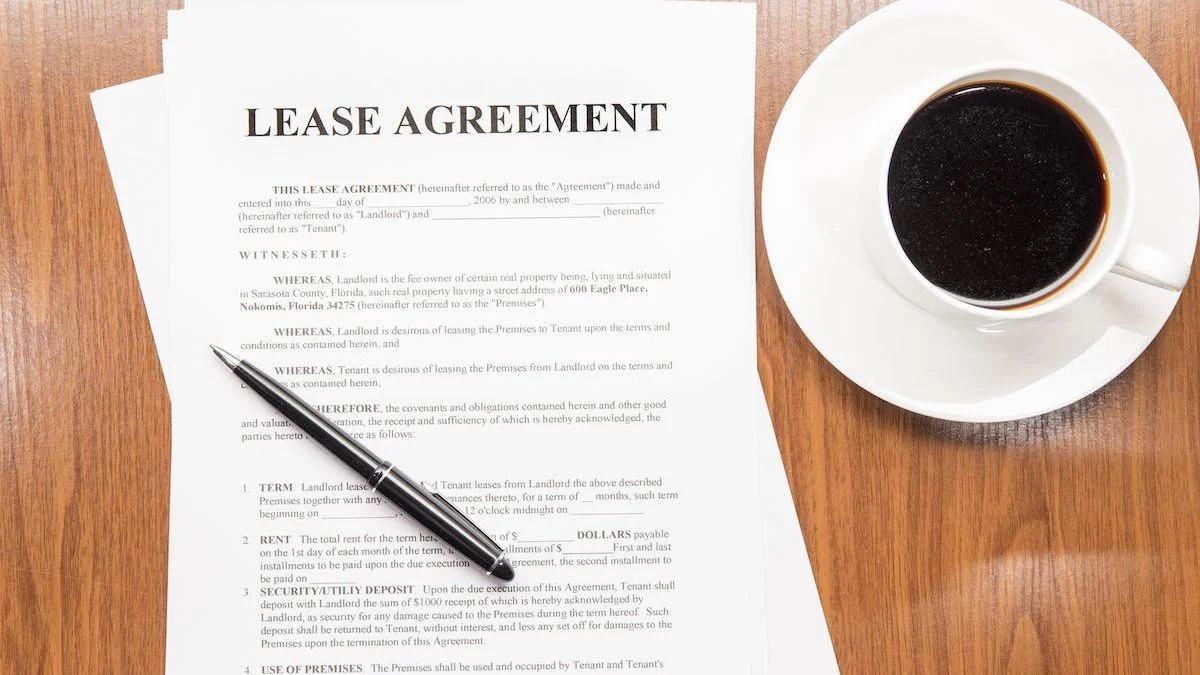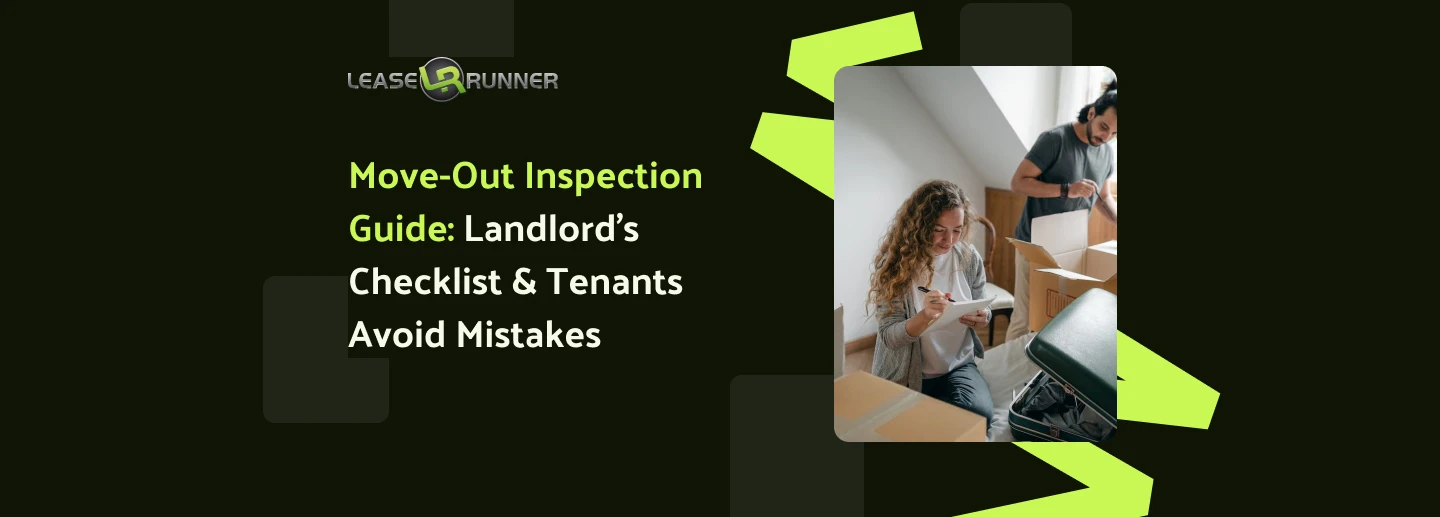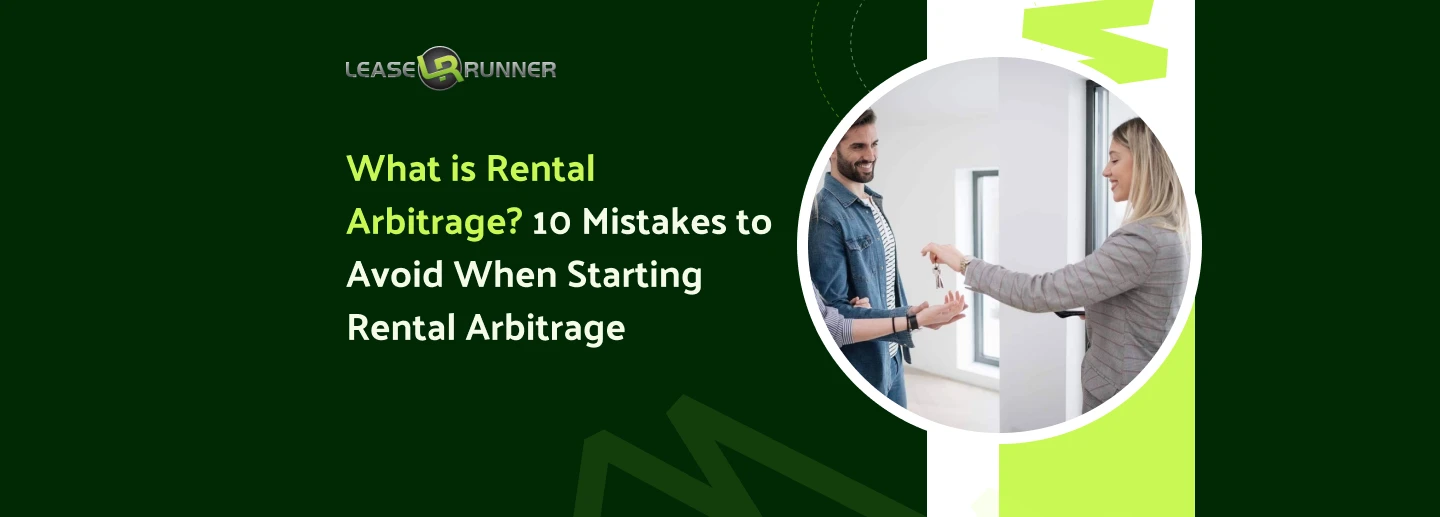When an apartment lease still has months left but a tenant needs to move out early, perhaps due to a new job or buying a home sooner than planned, a lease takeover apartment arrangement can offer a flexible and practical solution.
But how does a lease takeover work in an apartment, and what should landlords and tenants know before starting the process? Let’s find out below.
What Is a Lease Takeover?

A lease takeover (also known as lease assignment) is a legal process where the current tenant transfers the entire lease agreement to a new tenant for the remainder of the lease term. Once the landlord approves and signs off, the new tenant, referred to as the assignee, assumes all rights and responsibilities under the existing contract.
In most cases, the outgoing tenant is no longer legally obligated for rent or damages after the transfer, unless the landlord states otherwise in writing. The new tenant becomes the legal occupant, bound by the same rent, terms, and conditions as before.
For example, if a 12-month lease has 3 months remaining and the tenant needs to relocate, someone else can take over the lease and complete those four months. The landlord keeps the lease structure intact without needing to draft a new rental agreement.
A lease takeover contract typically includes:
- The names of both tenants (assignor and assignee)
- The property address and remaining term
- The date of the transfer
- The rent amount and payment terms
- Conditions for deposit transfer
- Landlord approval and signature
- A release clause for the outgoing tenant (if applicable)
In essence, a lease takeover apartment functions as a complete transfer of tenancy, not just a temporary occupancy, making it distinct from a sublease.
Lease Takeover vs. Sublease
It is vital for both landlords and tenants to know the difference between a lease takeover vs sublease. While both involve a new resident, the legal implications are distinct:
- A lease takeover means the entire lease is assigned to a new tenant. The original tenant usually steps out completely, and the landlord forms a direct relationship with the incoming tenant.
- A sublease keeps the original tenant (the sublessor) legally bound to the landlord while renting the apartment to another person (the sublessee). In this setup, the landlord may not have direct contact with the new occupant.
Let's take a look on this table:
From a landlord’s standpoint, a lease transfer apartment process is often clearer and more secure because it establishes direct accountability. A sublease, however, may create confusion about rent collection, maintenance, and liability.
For more on this distinction, a detailed comparison article on subletting vs subleasing can be helpful.
How to Do an Apartment Lease Takeover?

So, how does a lease takeover apartment work? The process of a lease takeover apartment is relatively straightforward but requires attention to detail.
Here are step-by-step process to ensure legality and avoid future disputes when leasing a takeover apartment:
Step 1: Review Your Lease Agreement
Before starting, the current tenant should carefully read the original lease. Many leases contain clauses outlining whether lease assignments are allowed, restricted, or prohibited. Some agreements require written consent, while others charge a lease transfer fee apartment, typically ranging from $100 to $500 depending on the property management company.
If the contract allows assignment, check for:
- Conditions requiring landlord approval
- Clauses about transfer fees
- Language around remaining liability after transfer
If no assignment clause exists, it’s best to discuss options directly with the landlord. Some might prefer a lease buyout or a cash-for-keys agreement instead of a takeover, especially if market rent has changed since the original lease was signed.
Step 2: Request Landlord Approval
A lease takeover apartment cannot proceed without landlord approval. Property owners often need assurance that the incoming tenant meets their screening standards.
The landlord may ask the new tenant to submit:
- A rental application and income verification
- Credit and background checks
- References from prior landlords
Some states, such as California and New York, legally require landlords to act reasonably when granting or denying consent for a lease transfer. Refusal without valid cause could be challenged under local tenant laws.
If you’re unsure how landlord consent works, you can explore related insights in can you add someone to a lease — a process that also requires written approval.
Step 3: Find a Replacement Tenant
Next, the current tenant must find someone willing to take over the lease. This step involves actively seeking a person who is willing to taking over a lease apartment pros and cons. The outgoing tenant is typically responsible for finding a qualified replacement for the lease takeover apartment.
- Screening: The incoming tenant must meet the landlord’s standard rental criteria, including credit checks and income verification. Landlords often require evidence of financial stability, which may include details on how do landlords verify employment.
- Negotiation: The outgoing tenant may offer incentives, such as paying the lease transfer fee apartment, to make the lease more appealing.
Landlords often prefer when the outgoing tenant does preliminary screening, saving time in the process. However, the final approval still rests with the landlord.
When searching, clearly state that the arrangement is a lease takeover rental, not a sublease, so interested parties understand they’ll assume full lease terms. For clarity on how occupancy differs from tenancy, read tenant vs occupant to understand who holds legal responsibility under the lease.
Step 4: Draft and Sign an Assignment Agreement
Once a qualified replacement is found and the landlord approves, it’s time to formalize the taking over a lease agreement in writing. This document, also called a Lease Assignment Agreement, must be drafted and signed by all three parties: the original tenant, the incoming tenant, and the landlord.
The agreement should include:
- Tenant names (assignor and assignee)
- Property address
- Lease start and end dates
- Landlord’s written consent
- Transfer conditions for deposits and furniture (if applicable)
This agreement legally transfers the lease obligations and should explicitly state that the original tenant is released from liability for future rent payments. To ensure full legal protection, many property managers recommend signing in front of a notary.
Step 5: Transfer Deposit and Handover
The last step in taking over a lease apartment is transferring the security deposit. In most cases, the outgoing tenant and incoming tenant handle this directly between themselves, while the landlord keeps the same deposit on record.
A move-in or move-out inspection should be completed to document the apartment’s condition. This prevents disputes later about pre-existing damage or deductions.
Finally, the landlord issues a confirmation letter verifying that the lease has officially been transferred to the new tenant.
Legal Considerations in the U.S.

Each state in the U.S. has its own landlord–tenant laws that regulate lease transfer apartment requirements. While the general concept of assignment is similar, the rules around consent, liability, and documentation can differ widely.
Landlord Consent
Most states allow landlords to require written consent before an assignment. Even where the law doesn’t specify, it’s best practice to get approval in writing. Landlords may only deny consent if they have a reasonable cause, such as poor credit, prior eviction history, or inability to pay rent.
Tenant Liability After Assignment
After the lease transfer apartment is approved, the original tenant (assignor) may or may not be released from future obligations. This depends on the language in the lease or the assignment agreement.
If the lease doesn’t specify a release, the outgoing tenant might still be responsible if the new tenant defaults. Therefore, it’s crucial to have a clause stating that the assignor is “released from all future liability” in the lease takeover apartment agreement.
Tips: Tenants uncertain about this should consult a local attorney or property law expert before signing.
State Differences
California
In California, California, landlords' discretion in lease transfers is restricted, with an implied standard that consent cannot be unreasonably withheld, according to California Civil Code § 1995.260. Meanwhile, in others, the landlord has full discretion.
New York
Under New York Real Property Law §226-b, tenants in buildings with at least four residential units have a legal right to request assignment. Landlords must respond within 30 days, either approving or providing valid reasons for refusal.
Texas
Texas Property Code §91.005 gives landlords broad authority, tenants cannot lease transfer apartment requirements or sublet without explicit permission. Violating this can result in eviction or loss of the security deposit.
Benefits of a Lease Takeover

A lease takeover apartment arrangement can be mutually beneficial for both tenants and landlords. It reduces financial risk, saves time, and maintains continuous occupancy without breaking the lease or writing a new one.
For Tenants (Outgoing)
For the outgoing tenant, a lease takeover apartment can prevent early termination penalties and protect their rental record. Instead of paying costly fees for breaking a lease, the tenant finds someone to legally assume the contract.
- Avoids financial penalties: t is significantly better than breaking a lease, which often incurs heavy financial penalties like a reletting fee or the payment of rent until a new tenant is found.
- Preserves rental history: Leaving on good terms helps maintain a positive landlord reference.
- Faster exit: Tenants relocating for work or personal reasons can move sooner without waiting for the lease to end.
Compared to a lease buyout - where tenants pay a lump sum to exit early, a takeover provides a cleaner, no-cost transition.
For Tenants (Incoming)
Taking over a lease can also be a great opportunity for the incoming tenant.
- Lower upfront costs: The apartment may already have a reduced deposit or furnished setup.
- Shorter lease term: Ideal for those needing temporary housing without committing to a full year.
- Locked-in rent rate: The new tenant inherits the previous tenant’s rent, which might be below current market rates.
- Flexibility: The incoming tenant can avoid a long-term commitment by only having to fulfill the remaining months of the original lease.
Incoming tenants should still check whether the landlord requires a lease transfer fee apartment or additional screening.
For Landlords
From the landlord’s perspective, a lease takeover rental minimizes turnover and vacancy loss.
- Continuous rent income: There’s no interruption between tenants.
- Reduces vacancy: Finding a replacement tenant quickly reduces the vacancy rate.
- Reduced marketing costs: The outgoing tenant often handles the advertising and pre-screening.
- Lower administrative effort: Instead of drafting a new lease, landlords only need to approve the assignment.
Additionally, landlords retain full control of their property while avoiding legal complexities tied to subleases.
Risks of a Lease Takeover

Despite the convenience, there are risks that each party should evaluate carefully before proceeding with taking over a lease takeover apartment.
For Tenants (Outgoing)
Outgoing tenants can benefit from escaping early lease penalties, but a lease transfer still carries legal and financial risks:
- Ongoing liability: If the landlord doesn’t release the outgoing tenant in writing, they may remain responsible for rent or damages caused by the new occupant.
- Unapproved transfer: Transferring a lease without landlord consent can be treated as an unauthorized sublease, violating lease terms and risking eviction.
- Security deposit confusion: Without a formal lease takeover contract, it may be unclear who holds or receives the deposit refund at the end of the lease.
- Transfer fees: Some landlords charge a lease transfer fee apartment, typically $100–$500 for processing paperwork or re-screening the new tenant.
- Reputation impact: If the new tenant fails to pay rent or damages the unit, the landlord may still associate those problems with the outgoing tenant unless the agreement is clearly documented.
For Tenants (Incoming)
Incoming tenants also assume important responsibilities and potential risks when taking over a lease agreement:
- Inherited lease terms: All existing clauses: rent amount, maintenance duties, pet policies, remain binding. Changing these terms often requires landlord approval.
- Hidden property issues: Any preexisting damage or appliance malfunction becomes the new tenant’s problem unless documented at move-in.
- Limited flexibility: Because the takeover continues the original lease, the new tenant may only have a few months remaining before renewal or move-out.
- Screening and credit checks: Some landlords require new background or income verification.
- Lack of transparency: If communication between outgoing and incoming tenants is poor, misunderstandings about payments or deposits may occur.
Incoming tenants should review the lease line by line, confirm landlord approval, and request a walk-through inspection before signing a lease takeover apartment
For Landlords
Landlords also face potential drawbacks when approving a lease transfer apartment:
- Screening risks: The new tenant may not meet income or credit standards, creating potential nonpayment or eviction issues.
- Documentation errors: Incomplete or unclear assignment paperwork can lead to disputes about who is legally responsible for rent or property damage.
- Deposit disputes: If the outgoing and incoming tenants handle the deposit privately, landlords may become entangled in refund disagreements later.
- Reduced control: Frequent lease takeover apartment may disrupt stability in multi-unit properties, especially when tenant turnover is high.
- Administrative time: Verifying new tenant information and amending lease records can require extra effort and resources.
To mitigate these risks, landlords can:
- Require a formal written assignment
- Conduct a move-in inspection with both tenants present
- Retain a portion of the security deposit until the end of the lease
For property managers, maintaining up-to-date vacancy tracking can also help.
Conclusion
A lease takeover apartment offers an efficient way to transition between tenants without breaking a lease or starting from scratch. For landlords, it preserves consistent cash flow; for tenants, it provides flexibility during life changes.
However, housing laws differ by state, understanding local requirements is essential before proceeding. Whether managing one unit or multiple properties, digital tools can simplify every step from verifying applicants to processing lease assignments.
LeaseRunner offers an all-in-one online leasing platform that helps landlords and property managers handle tenant screening, e-sign leases, and process payments securely. For those managing lease takeovers or reassignments, it’s a reliable partner that ensures compliance and saves time.
Explore how LeaseRunner can make lease management easier and more transparent for both landlords and tenants.
FAQs
Do I always need landlord approval for a lease takeover?
In most cases, yes. Landlords typically require written consent before any lease transfer. Some states legally mandate that landlords act reasonably when granting or denying requests.
What happens to the security deposit?
Usually, the outgoing and incoming tenants handle the deposit transfer privately, while the landlord continues to hold the original deposit. Always document this process with a signed agreement.
Can a landlord charge a fee for assignment?
Yes. Many property managers include a lease transfer fee apartment to cover administrative costs, ranging from $100 to $500.
Is lease takeover better than breaking a lease?
In most cases, yes. A lease takeover apartment is usually financially less damaging and less legally complex than breaking a lease, which can result in penalties akin to a lease buyout apartment or even eviction proceedings, depending on the circumstances.







